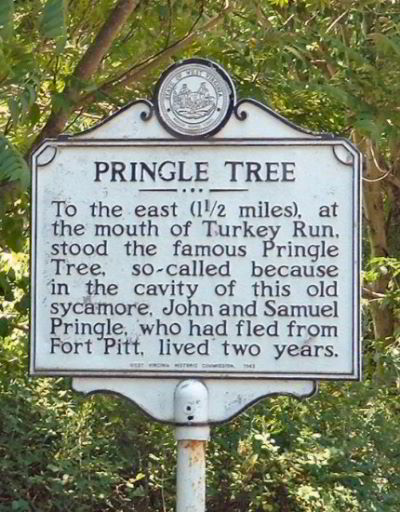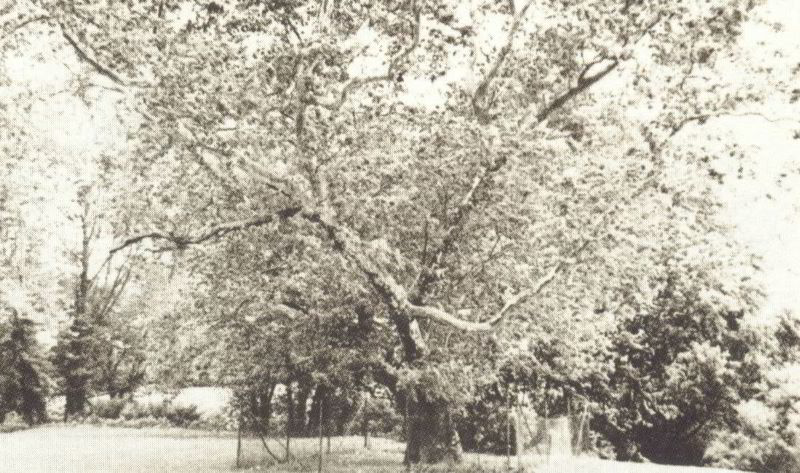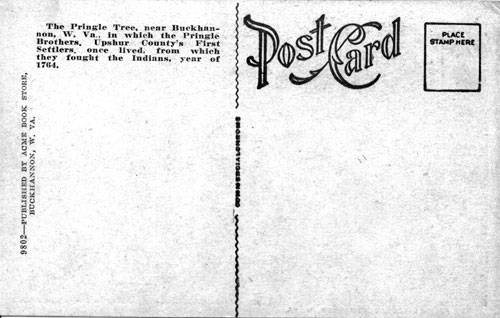|
ENTS,
A friend of mine was talking last night about the Pringle
Sycamore in West Virginia. I had not heard of it, so looked it up
tonight. It is a simple story of two army deserters living inside a
hollow sycamore tree for three years in the 1700's. The best
reference was from Wikipedia:

http://en.wikipedia.org/wiki/Buckhannon,_West_Virginia
The history of Upshur County begins with the initial discovery
and settling of the Buckhannon River Valley. Englishmen brothers
Samuel and John Pringle were soldiers serving in the French and
Indian War. In 1761, they decided to abandon their post at Fort Pitt
(present-day Pittsburgh, Pennsylvania). They traveled southward and
upstream along the Monongahela River and Tygart Valley River. When
they came upon a fork in the latter river, they took the
right-hand-side river that branched into the main river. This
junction is located at the mouth of the Buckhannon River.

The two brothers arrived in present-day Upshur County in 1764.
They took up shelter and residence in an eleven-foot-deep cavity in
a once-towering American sycamore. The hollow of this botanical
giant was made their sole dwelling for about three years. This
Sycamore, known as The Pringle Tree, is now a third-generation tree.
It stands beside a stream named Turkey Run in a meadow beside the
Buckhannon River. While living in this naturally beautiful river
valley, the Pringle brothers survived frigid winters. They hunted
rabbits, turkey, the once-plentiful American Bison, and fish-notably
trout. They also skillfully avoided prowling timber wolves. It is
written that Samuel survived hunting experiences with an American
black bear and later a Mountain Lion.
In the Autumn of 1767, their ammunition was running dangerously
low; two charges of powder more exactly. Although they feared
capture and incarceration for desertion, it was John whom finally
decided to return for supplies. The closest settlements to their
newfound home were on the South Branch Potomac River or Wappatomaka,
located north-easterly about two hundred miles away. When he
eventually returned to the Sycamore, he brought back news that
neither man was wanted by any military authorities. Peace had been
declared between the two warring parties and the brothers could
safely return to the nearest civilization.
The Pringle Brothers decided to leave the river valley and move
to the South Branch settlements. John never returned to resettle at
the Sycamore, but later made a home in the Commonwealth of Kentucky
instead. Samuel returned with his wife Mrs. Charity Pringle (née
Cutright). Settlers accompanying them include John Cutright, Jr.-
(Charity's brother), Thomas Hughes, John and Elizabeth Jackson, and
their sons George and Edward Jackson. A permanent settlement was
finally established by 1770 including the fortified structure known
as Bush's Fort.
Also:
http://www.hackerscreek.com/pringle.htm
http://www.eg.bucknell.edu/~hyde/jackson/
http://www.aca-dla.org/cdm4/document.php?CISOROOT=/WVWC&CISOPTR=320&R...
http://www.waymarking.com/waymarks/WMVTK


 Continued
at:
|